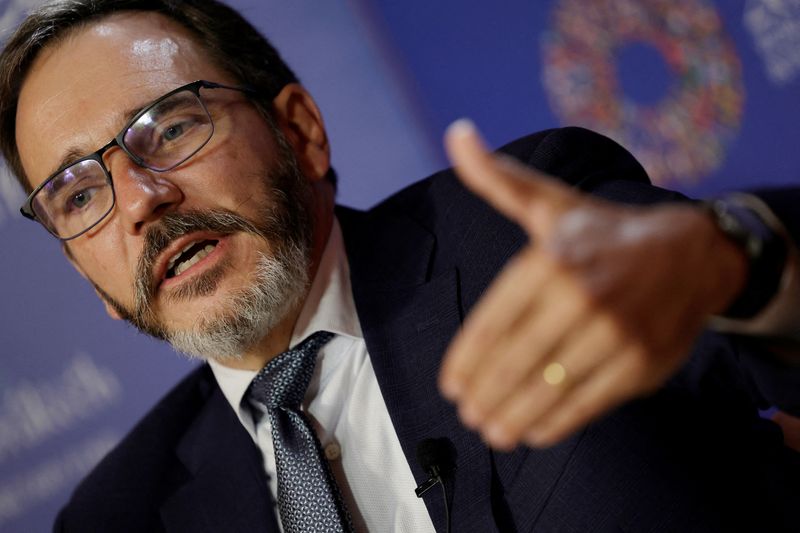No rush for US Fed to cut rates, IMF’s chief economist says
2024.07.16 13:16
By David Lawder
WASHINGTON (Reuters) – Cooling inflation data is allowing the Federal Reserve to begin a “very reasonable” shift toward easing rates, but a still-strong U.S. labor market means that there’s no rush to make decisions, International Monetary Fund chief economist Pierre-Olivier Gourinchas told Reuters.
Gourinchas said in an interview accompanying the release of new IMF growth forecasts on Tuesday it is better for the Fed to wait a bit longer to ensure there are no further upside surprises on inflation like those in the first quarter that delayed expected rate cuts to later this year.
“Given the good news on inflation, it’s very natural that the Federal Reserve is now starting to look at what’s happening in the labor market and wanting to make sure that they don’t overdo it” with tight monetary policy, Gourinchas said.
“They’re in a position where they can afford to wait a little bit, and then see how some of the additional reports come in – be data-dependent as sometimes the central bankers like to say – and then adjust course based on that.”
Gourinchas spoke to Reuters after Fed Chair Jerome Powell told an economic group on Monday that three inflation readings during the second quarter “add somewhat to confidence” that the pace of price increases is returning to the Fed’s target in a sustainable fashion. These included last week’s first monthly fall in the Consumer Price Index in four years.
Gourinchas said he continues to anticipate one Fed rate cut this year, but declined to specify his preferred timing for that first move.
The IMF anticipates that inflation will reach the Fed’s 2% target in the first half of 2025 – sooner than the Fed’s own internal target of 2026 – so Gourinchas said there would not be an “extended period” before rate cuts became appropriate.
Financial markets had anticipated U.S. rate cuts starting in the first half of 2024, but Gourinchas said inflation in the services sector had proven more persistent than anticipated, creating some “bumps” that slowed the disinflation path.

He said he still has some concerns about wage increases, especially in the labor-intensive services sector that could stoke inflation pressures, adding the Fed was watching this closely.
“We should take into account the fact that some of these forces, some of the persistence of inflation could be there,” Gourinchas said. “We had one good number reported for June, but let’s see what we’re going to get for July and August.”








